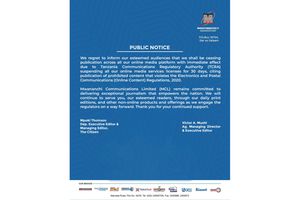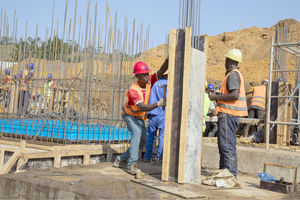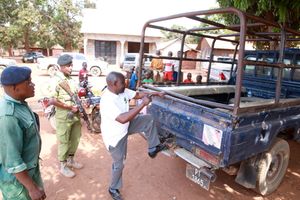‘Makinikia’ and economic liberation: The untold story – 12

What you need to know:
- There were also several exploration projects in critical minerals including the Ngualla REE project.
As time progressed with the implementation of the new policy and the mining code, mining companies’ anxiety that was created during the reform process began to fade away and direct foreign investment in exploration began to once again rise.
The new regulatory and fiscal regime raised appetite for investment in exploration for uranium, iron ore and other critical minerals like nickel, graphite, REE, Niobium, nickel, cobalt, vanadium, titanium, lithium and helium gas.
For instance, the Mkuju River Uranium Project was on the road to open a mine where UraniumOne, a subsidiary of ROSATOM, a Russian nuclear state company, bought the project from Mantra Resources Ltd of Australia and completed a feasibility study in anticipation of opening a mine by 2018.
The Kabanga Nickel project, owned by Kabanga Nickel Company that stalemated for some time due to the misconstrued effects of the reforms, woke up and was anticipating to open a mine by 2018.
The other nickel projects that suddenly also became active were the Zanzui and Dutwa projects, under the Blackdown Resources Ltd of the UK, and the Ntaka (Nditi) project in Nachingwea that was owned by Ntaka Nickel Holdings of Australia.
Others were the Liganga-Mchuchuma iron ore project owned by the Tanzania China International Mineral Resource Limited (TCIMRL), a JV company between the National Development Corporation (20 percent) on behalf of the Government of Tanzania and Sichuan Hongda Company of China (80 percent), which also became active after a shareholding agreement to start mining iron ore to produce steel, titanium and vanadium by 2016 was signed.
By 2014, over 10 graphite exploration projects were in advanced stage and anticipated opening up mines as early as 2017 onwards.
The graphite projects included the Nachu Project in Ruangwa District owned by Maginis of Australia and operated by URANEX, a subsidiary company of Magnis incorporated in Tanzania.
URANEX then completed a feasibility study and signed a Development Agreement with the government in 2014 giving up a five percent free carried interest to the government, according to Section 10 of the Mining Act, 2010.
URANEX also signed an agreement with the Export Processing Zone Authority (EPZA) to set aside part of the produced graphite for a battery manufacturing factory to be set up at the EPZA industrial area at Ubungo.
Finally, URANEX compensated families in the mine area to allow mine construction and the company was ready to start the mine construction by the end of 2015.
The other graphite exploration projects included Mbunyu in Masasi owned by Volt Resources of Australia; Epanko in Morogoro owned by Tanznagraf, later changed to Ecograf of Australia; Chiilao project in Lindi owned by Evolution Energy Minerals and to be operated by Nguena Tanzania Limited; Lindi Jumbo project owned by Lindi Jumbo Ltd; Mahenge project owned by Blackrock Mining and list goes on and on, just to mention a few. All these projects were completing feasibility studies to open up mines by 2017 and beyond.
The other project was the Niobium Panda hill project under Cradle Resources and Tremont Investments was ready for the construction of a mine just to be delayed by the presence of a government prison facility in the area that could not be relocated to date.
There were also several exploration projects in critical minerals including the Ngualla REE project under Peak Resources of Australia, the Wigu Carbonatite REE project under Montero Mining and Exploration Company of Canada; the Fungoni titanium-chromium heavy sand project near Dar es Salaam, owned by Strandline Resources; and the lithium exploration project at Hombolo in Dodoma under the Liontown Resources Ltd.
Additional important project that came on-stream was the HeliumOne Company for helium gas exploration in the abyss of the Lake Rukwa. Although there was now little appetite for gold exploration, the Nyanzaga Gold Project under OreCorp also started to function.
All these companies saw a new mining dawn descending and they boarded the year 2015 and beyond as years of mining prosperity. Tanzania once again became a new mining Mecca.
Today, some of these companies have signed framework agreements to work with the government according to the new law of 2017.





